Milestones in EPA's Water Research History
EPA turns 50 this year. Since the beginning, our Agency has been grounded in science. EPA’s water research provides the science and innovative technologies that the Agency and the nation need to maintain drinking water resources and systems, as well as to protect the chemical, physical and biological integrity of the nation’s waters. Here are some of our most important research achievements over the last 50 years.
See also:
History of EPA Research
EPA at 50: Progress for a Stronger Future
1969-A Fire on the Cuyahoga River Highlights the Need to Protect the Environment
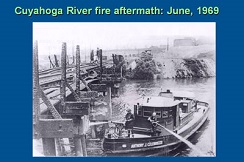 The Cuyahoga River in Ohio becomes so polluted that it catches on fire. The fire helped spur an avalanche of water pollution control activities, such as the Clean Water Act and the Great Lakes Water Quality Agreement. By bringing national attention to water pollution issues, the Cuyahoga River fire is one of the events that led to the creation of the U.S. EPA and the Ohio EPA.
The Cuyahoga River in Ohio becomes so polluted that it catches on fire. The fire helped spur an avalanche of water pollution control activities, such as the Clean Water Act and the Great Lakes Water Quality Agreement. By bringing national attention to water pollution issues, the Cuyahoga River fire is one of the events that led to the creation of the U.S. EPA and the Ohio EPA.
Celebrating the Comeback of the Burning River, 1969-2019 Exit(Source: Ohio EPA)
1971– EPA Develops the Storm Water Management Model (SWMM)
 EPA scientists develop and release the first version of SWMM. The model now incorporates green infrastructure practices and is used widely throughout the world and is considered the gold standard in the design of urban wet-weather flow pollution abatement approaches.
EPA scientists develop and release the first version of SWMM. The model now incorporates green infrastructure practices and is used widely throughout the world and is considered the gold standard in the design of urban wet-weather flow pollution abatement approaches.
Storm Water Management Model (SWMM)
1972– The US and Canada Cooperate to Clean Up the Great Lakes
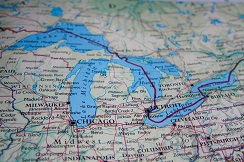 The U.S. and Canada agree to clean up the Great Lakes, which contain 95 percent of North America's fresh water and supplies drinking water to approximately 25 million people. EPA science contributes to the assessment and clean-up of the lakes.
The U.S. and Canada agree to clean up the Great Lakes, which contain 95 percent of North America's fresh water and supplies drinking water to approximately 25 million people. EPA science contributes to the assessment and clean-up of the lakes.
Great Lakes Water Quality Agreement (GLWQA)
The Great Lakes
1972 - EPA Research Supports the Clean Water Act
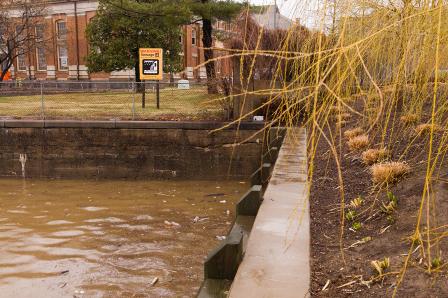 Congress passes the Clean Water Act to restore and maintain the nation’s waters by preventing pollution. EPA science continues to support the implementation of the Clean Water Act.
Congress passes the Clean Water Act to restore and maintain the nation’s waters by preventing pollution. EPA science continues to support the implementation of the Clean Water Act.
Summary of the Clean Water Act
1975 - EPA Opens a Facility Focused on Drinking Water Research
 EPA chooses Cincinnati, Ohio as the site for its primary water research programs. A new water research facility is dedicated by President Gerald R. Ford as the EPA Environmental Research Center. The facility is later renamed in honor of its first director and is internationally recognized for drinking water research.
EPA chooses Cincinnati, Ohio as the site for its primary water research programs. A new water research facility is dedicated by President Gerald R. Ford as the EPA Environmental Research Center. The facility is later renamed in honor of its first director and is internationally recognized for drinking water research.
Andrew W. Breidenbach Environmental Research Center
1977 - EPA Research Supports National Drinking Water Standards
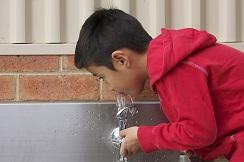 National drinking water standards go into effect for the first time. All public water suppliers are required to test their public water routinely and notify their customers if water was not up to EPA standards. EPA scientists support the drinking water standards with robust research.
National drinking water standards go into effect for the first time. All public water suppliers are required to test their public water routinely and notify their customers if water was not up to EPA standards. EPA scientists support the drinking water standards with robust research.
Drinking Water Regulations and Contaminants
1993 - EPA Focuses Water Research on Fighting Pathogens
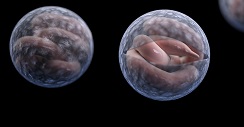 EPA researchers begin a decade of research focused on disinfection, treatment, and development of methods to treat stubborn pathogens. This follows the 1993 Cryptosporidiosis outbreak in Milwaukee and the 1991 reauthorization of the Clean Water Act.
EPA researchers begin a decade of research focused on disinfection, treatment, and development of methods to treat stubborn pathogens. This follows the 1993 Cryptosporidiosis outbreak in Milwaukee and the 1991 reauthorization of the Clean Water Act.
Health and Water Research
Cryptosporidium and the Milwaukee Incident
Cryptosporidium: The Milwaukee Experience and Relevant Research
1994 - EPA Releases a Model for Drinking Water Distribution Systems
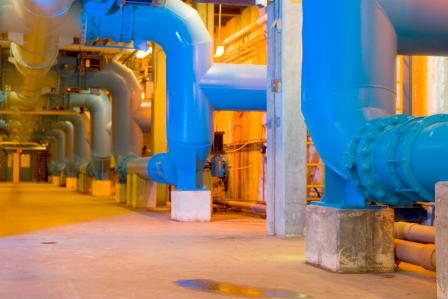 EPA releases the first version of EPANET, which is used throughout the world to model drinking water distribution systems. It can also be used to evaluate resilience to security threats or natural disasters. EPANET helps water utilities maintain and improve the quality of water delivered to consumers.
EPA releases the first version of EPANET, which is used throughout the world to model drinking water distribution systems. It can also be used to evaluate resilience to security threats or natural disasters. EPANET helps water utilities maintain and improve the quality of water delivered to consumers.
1997 - EPA Evaluates Treatment of Surface Water Used for Drinking
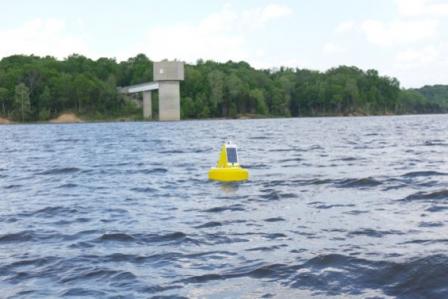 EPA completes the first community intervention study evaluating the public health benefits associated with Agency-mandated treatment of surface water used for drinking. This study is key in the National Estimate of Waterborne Diseases and in enforcement actions.
EPA completes the first community intervention study evaluating the public health benefits associated with Agency-mandated treatment of surface water used for drinking. This study is key in the National Estimate of Waterborne Diseases and in enforcement actions.
Drinking Water Requirements for States and Public Water Systems
An approach for developing a national estimate of waterborne disease due to drinking water and a national estimate model application.
Study of Waterborne Disease Occurrence
2001 - EPA Adopts New Standard for Arsenic in Drinking Water
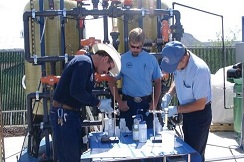 Based on the latest research, EPA adopts a new standard lowering the permissible amount of arsenic in drinking water from 50 µg/L to 10 µg/L. To help states meet these new standards, EPA researchers evaluate innovative and cost-effective water treatment technologies. With 50 demonstration projects in 26 states, EPA provides water utility operators and regulators with important information about removing arsenic from drinking water.
Based on the latest research, EPA adopts a new standard lowering the permissible amount of arsenic in drinking water from 50 µg/L to 10 µg/L. To help states meet these new standards, EPA researchers evaluate innovative and cost-effective water treatment technologies. With 50 demonstration projects in 26 states, EPA provides water utility operators and regulators with important information about removing arsenic from drinking water.
Arsenic Treatment Technology Demonstrations
2005 - EPA Advances Microbial Source Tracking
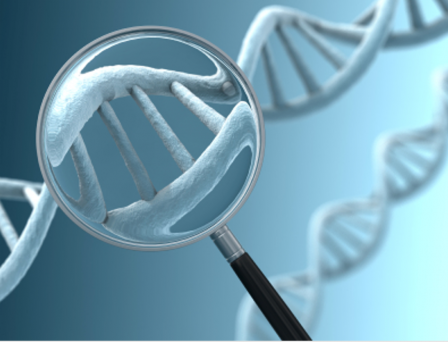 EPA researchers develop advanced microbial source tracking assays for protecting recreational waters and drinking water sources. The novel DNA sorting technique known as Genome Fragment Enrichment can identify sources of fecal pollution. This speeds the implementation of appropriate corrective measures and lowers the cost of cleanup.
EPA researchers develop advanced microbial source tracking assays for protecting recreational waters and drinking water sources. The novel DNA sorting technique known as Genome Fragment Enrichment can identify sources of fecal pollution. This speeds the implementation of appropriate corrective measures and lowers the cost of cleanup.
Recreational Water Quality Criteria Research
2007 - EPA Begins the Aging Water Infrastructure Research Program
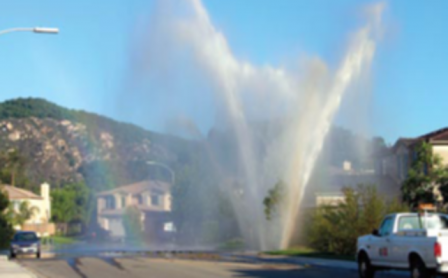 EPA begins an initiative to develop innovative technologies for the operations, maintenance, and replacement of aging and failing drinking water and wastewater systems. Researchers conduct the critical science and engineering needed to improve and evaluate promising innovative technologies and techniques for more effective operation and maintenance of systems.
EPA begins an initiative to develop innovative technologies for the operations, maintenance, and replacement of aging and failing drinking water and wastewater systems. Researchers conduct the critical science and engineering needed to improve and evaluate promising innovative technologies and techniques for more effective operation and maintenance of systems.
Aging Water Infrastructure Research
2011 - EPA Launches a Water Technology Innovation Cluster
 In partnership with the Small Business Administration, EPA announces the formation of Confluence, a Water Technology Innovation Cluster in the Dayton/Cincinnati/Northern Kentucky/Southeast Indiana area. Water clusters help solve the Nation's environmental challenges by spurring technology innovation. EPA’s Cincinnati research facility was selected for this initiative because of its rich research and development infrastructure to anchor the effort technically.
In partnership with the Small Business Administration, EPA announces the formation of Confluence, a Water Technology Innovation Cluster in the Dayton/Cincinnati/Northern Kentucky/Southeast Indiana area. Water clusters help solve the Nation's environmental challenges by spurring technology innovation. EPA’s Cincinnati research facility was selected for this initiative because of its rich research and development infrastructure to anchor the effort technically.
2012 - EPA Develops Virtual Beach Software
 EPA develops a rapid method to determine within four hours if water is safe for recreational use, and a Virtual Beach software suite that uses local data such as wave height, water temperature and rainfall to forecast concentrations 24-48 hours in advance. The science is used to update the national recreational water quality criteria.
EPA develops a rapid method to determine within four hours if water is safe for recreational use, and a Virtual Beach software suite that uses local data such as wave height, water temperature and rainfall to forecast concentrations 24-48 hours in advance. The science is used to update the national recreational water quality criteria.
2012 - EPA Collaborates on the NetZero Project
![]() EPA launches the Net Zero initiative with the Department of Energy and U.S. Army Corp of Engineers. Net Zero is a collaboration focused on developing and applying innovative approaches for reducing water use, and repurposing, recovering and recycling water resources at Fort Riley and other U.S. military bases.
EPA launches the Net Zero initiative with the Department of Energy and U.S. Army Corp of Engineers. Net Zero is a collaboration focused on developing and applying innovative approaches for reducing water use, and repurposing, recovering and recycling water resources at Fort Riley and other U.S. military bases.
Promoting Sustainability through Net Zero Strategies
2014 - EPA Focuses Support on Small Drinking Water Systems
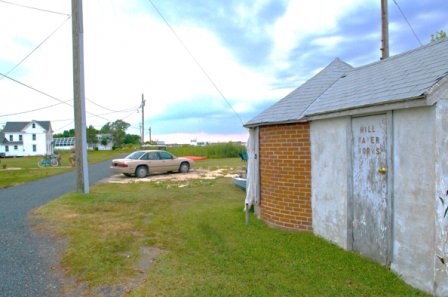 EPA begins an outreach campaign to support state and local officials with small drinking water systems. EPA’s small systems training workshops and webinars continue to provide in-depth information on various solutions and strategies for handling system challenges and included the latest in EPA research.
EPA begins an outreach campaign to support state and local officials with small drinking water systems. EPA’s small systems training workshops and webinars continue to provide in-depth information on various solutions and strategies for handling system challenges and included the latest in EPA research.
Small Drinking Water Systems Research
2015 - EPA Teams with Federal Partners to Fight HABs
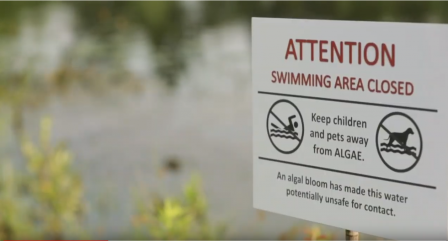 EPA teams with the National Aeronautics and Space Administration, the National Oceanic and Atmospheric Administration, and the United States Geological Survey to form the Cyanobacteria Assessment Network with a focus on developing tools using satellite data to help protect the public from harmful algal blooms (HABs) in fresh water.
EPA teams with the National Aeronautics and Space Administration, the National Oceanic and Atmospheric Administration, and the United States Geological Survey to form the Cyanobacteria Assessment Network with a focus on developing tools using satellite data to help protect the public from harmful algal blooms (HABs) in fresh water.
Cyanobacteria Assessment Network
CyAN app
2015 - EPA Develops New Methods for Testing Drinking Water for Algal Toxins
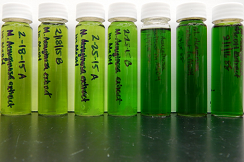 EPA scientists finalize a new method for determining the presence and concentrations of cyanobacterial toxins in drinking water. These toxins are produced by harmful algal blooms in water and cause health risks for humans and animals.
EPA scientists finalize a new method for determining the presence and concentrations of cyanobacterial toxins in drinking water. These toxins are produced by harmful algal blooms in water and cause health risks for humans and animals.
Harmful Algal Blooms and Cyanobacteria Research
Methods to Measure Waterborne Contaminants Research
2015 - EPA Improves Testing of Recreational Water
 EPA begins a multi-year field study of the health effects of beachgoers exposed to fecal-contaminated recreational water. The epidemiological study developed dose-response associations between novel, faster approaches to measure water quality and health symptoms among swimmers. The research directly informed revised recreational water quality criteria.
EPA begins a multi-year field study of the health effects of beachgoers exposed to fecal-contaminated recreational water. The epidemiological study developed dose-response associations between novel, faster approaches to measure water quality and health symptoms among swimmers. The research directly informed revised recreational water quality criteria.
Water Quality Criteria
Recreational Water Quality Criteria Research
2016 - EPA Assesses the Impacts of Hydraulic Fracturing on Drinking Water
 Congress requests a National Study on the Impacts of Hydraulic Fracturing on Drinking Water. EPA plays a key role in coordinating and staffing the research effort. In 2016, EPA releases the final assessment. The report concludes that hydraulic fracturing activities can impact drinking water resources under some circumstances. Impacts can range in frequency and severity, depending on the combination of hydraulic fracturing water cycle activities and local- or regional-scale factors.
Congress requests a National Study on the Impacts of Hydraulic Fracturing on Drinking Water. EPA plays a key role in coordinating and staffing the research effort. In 2016, EPA releases the final assessment. The report concludes that hydraulic fracturing activities can impact drinking water resources under some circumstances. Impacts can range in frequency and severity, depending on the combination of hydraulic fracturing water cycle activities and local- or regional-scale factors.
Hydraulic Fracturing For Oil And Gas: Impacts From The Hydraulic Fracturing Water Cycle On Drinking Water Resources In The United States (Final Report)
EPA Releases Final Report of the Potential Impacts of Hydraulic Fracturing on Drinking Water Resources (Blog by Tom Burke)
2018 – EPA Adds PFAS Treatment to the Drinking Water Treatability Database
 EPA’s Drinking Water Treatability Database provides public access to reference information gathered from thousands of peer-reviewed literature sources on the control of contaminants in drinking water. Researchers at the Agency update the database with information on the capabilities of drinking water treatment technologies for removal of per- and polyfluoroalkyl compounds. Researchers continue to keep the Database current with the latest technologies.
EPA’s Drinking Water Treatability Database provides public access to reference information gathered from thousands of peer-reviewed literature sources on the control of contaminants in drinking water. Researchers at the Agency update the database with information on the capabilities of drinking water treatment technologies for removal of per- and polyfluoroalkyl compounds. Researchers continue to keep the Database current with the latest technologies.
Drinking Water Treatability Database
Per- and Polyfluoroalkyl Substances (PFAS)
2018 – EPA Updates a Methods for Treating PFAS
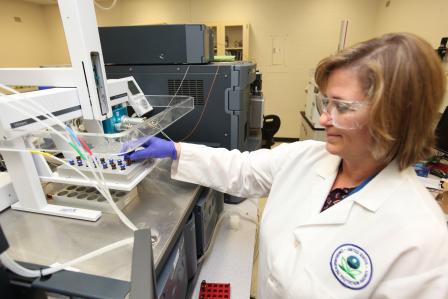 EPA updates Method 537 to quantitate 18 per- and polyfluoroalkyl compounds (PFAS) in drinking water. EPA had published the original Method 537 for detecting 14 PFAS in 2009. Since then, more PFAS that have the potential to contaminate drinking water have been identified or introduced in manufacturing as PFOA/PFOS alternatives.
EPA updates Method 537 to quantitate 18 per- and polyfluoroalkyl compounds (PFAS) in drinking water. EPA had published the original Method 537 for detecting 14 PFAS in 2009. Since then, more PFAS that have the potential to contaminate drinking water have been identified or introduced in manufacturing as PFOA/PFOS alternatives.
